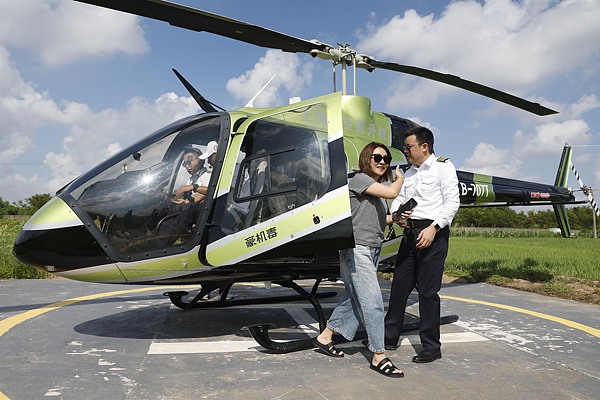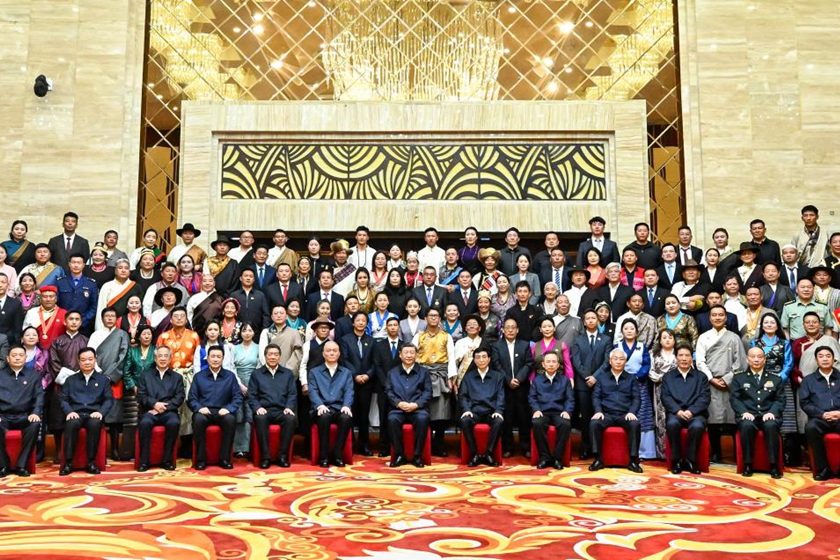
This photo taken on August 18, 2024 shows a helicopter passenger service linking Kunshan in Suzhou with Shanghai Pudong International Airport. (CFP)
In the past three months, more than 10 new low-altitude passenger flight routes have been launched or tested in the Yangtze River Delta region, with more routes in planning and development.
One of two tourism routes launched at Wuxi Dingshu Airport was dedicated to aerial cherry blossom viewing, carrying over 500 passengers between March 20 and 31.
Compared to sightseeing routes, those emphasizing transportation connections have gained more momentum this year, usually involving airports and railway stations between cities.
For example, Shanghai New Sky Heli opened a two-way passenger flight between Pudong and Kunshan in Jiangsu Province, marking China's first inter-provincial, fixed-point helicopter passenger service. The company’s chairman, Cao Xintian, said that Kunshan was selected for its economic strength, having ranked first among China’s top 100 economically powerful counties for 20 consecutive years. Kunshan has also set the goal of becoming a pioneer in low-altitude economic development.
Despite the growing interest in helicopter flights, the field still face many challenges. For example, the price for a Huangpu River sightseeing flight is 1,980 yuan per person per trip, while the one-way fare for the Pudong-Kunshan route is 1,600 yuan or 1,800 yuan, making this travel option quite expensive to try.
A helicopter service executive mentioned that current occupancy rates can not cover cost, and prices may only decrease with an increase in flight frequency and occupancy rates.
While helicopters offer faster travel times, they cannot land directly at civil aviation airports, which requires passengers to transfer from a nearby helipad to the airport. This added inconvenience could affect passengers’ willingness to use low-altitude flight service.
To address these challenges, authorities in the delta region have accelerated plans for general airport construction. Jiangsu aims to build 35 general airports by 2035, while Zhejiang plans to have 20 Class A general airports by 2027.
Progress has also been made in improving transportation connections. On October 12, a seven-seater helicopter from Wujiang District of Suzhou City successfully landed at Xinhong heliport at Shanghai Hongqiao International Airport, marking the first direct connection to a busy airport in East China, thanks to various coordination measures taken by civil aviation authorities.
Passenger flight service providers can also collaborate by sharing infrastructure and maintenance resources, which would reduce costs and improve service quality, according to a manager from Kunshan City Terminal.




















